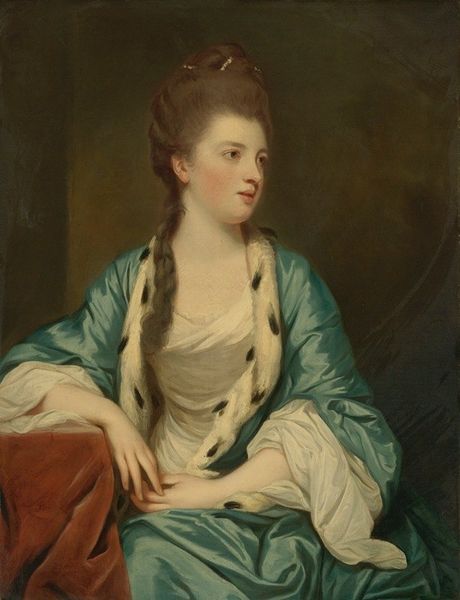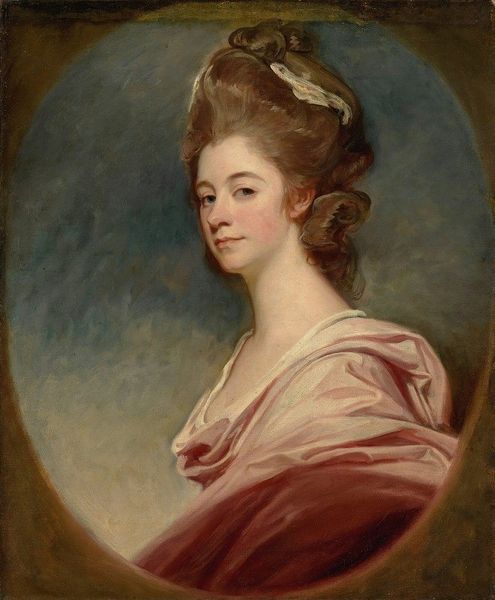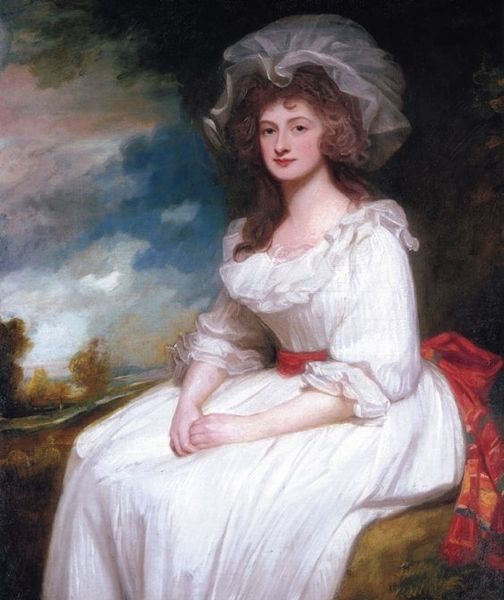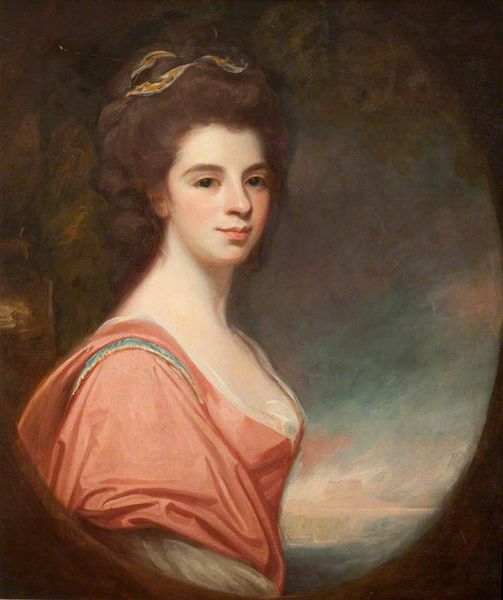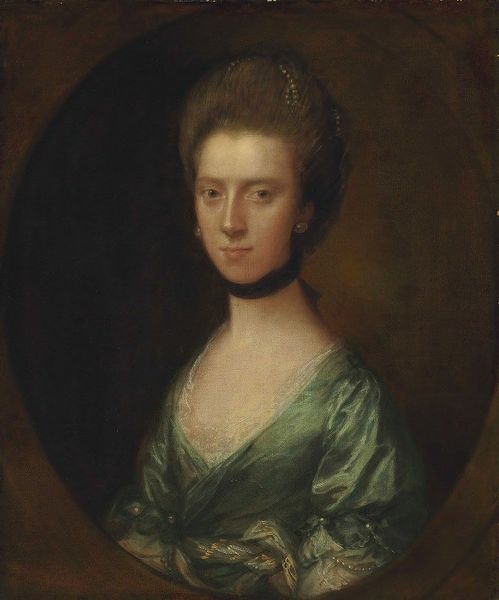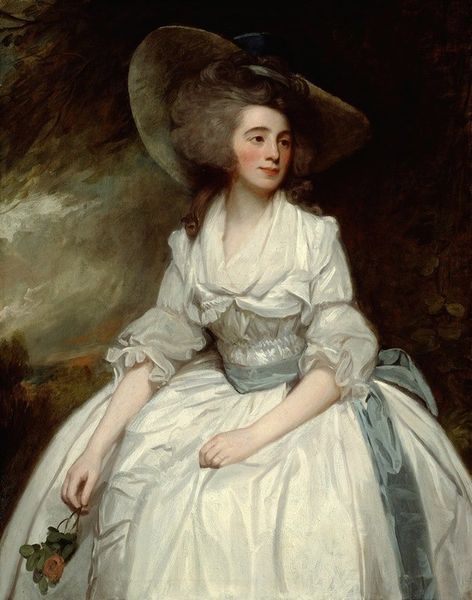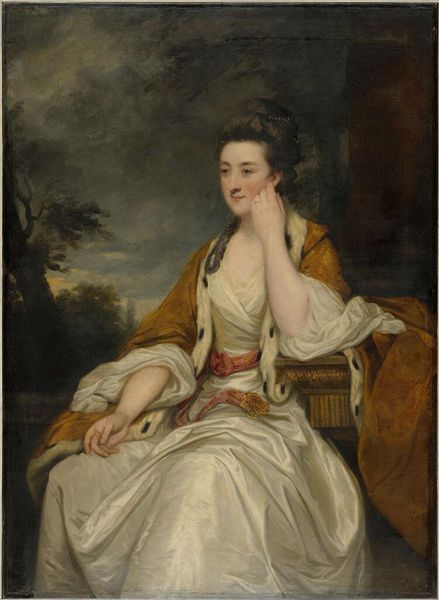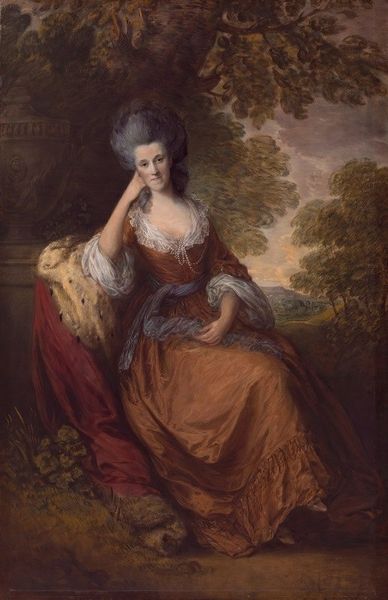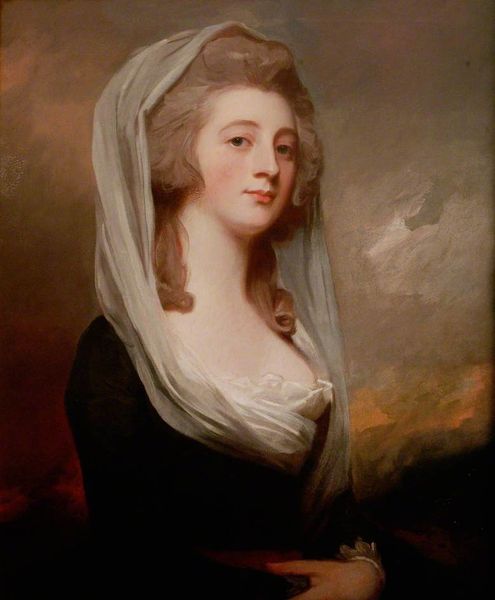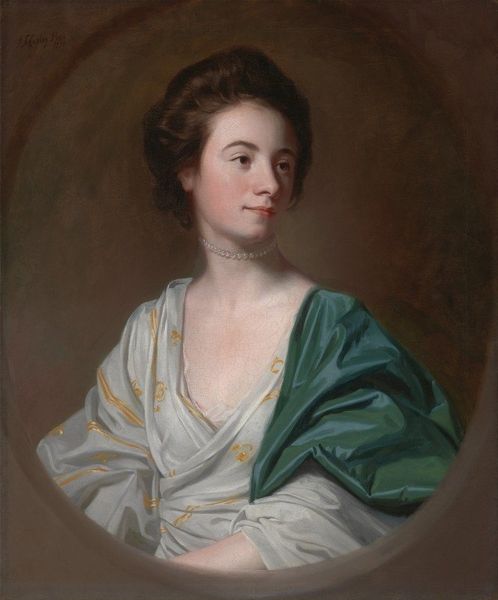
Copyright: Public Domain: Artvee
George Romney made this portrait of Miss Clavering in oil paint on canvas, a pretty standard method for portraying the British elite in the eighteenth century. Look closely, and you'll see the way Romney used thin washes of color to build up the image, especially in the background. Notice how the brushstrokes are more visible there, creating a sense of atmosphere. The dress, with its soft, flowing lines, speaks to the skill of both the painter and the dressmaker. Think about the labor involved in producing that fabric, from the cultivation of flax or cotton to the spinning, weaving, and bleaching processes, not to mention the delicate work of sewing. Romney was not only creating a likeness, but also presenting an image of refinement and wealth. The painting reflects not just artistic skill, but also a whole network of production and consumption that defined the era. Recognizing these material and social dimensions helps us appreciate the painting's full significance, beyond just its aesthetic appeal.
Comments
No comments
Be the first to comment and join the conversation on the ultimate creative platform.
